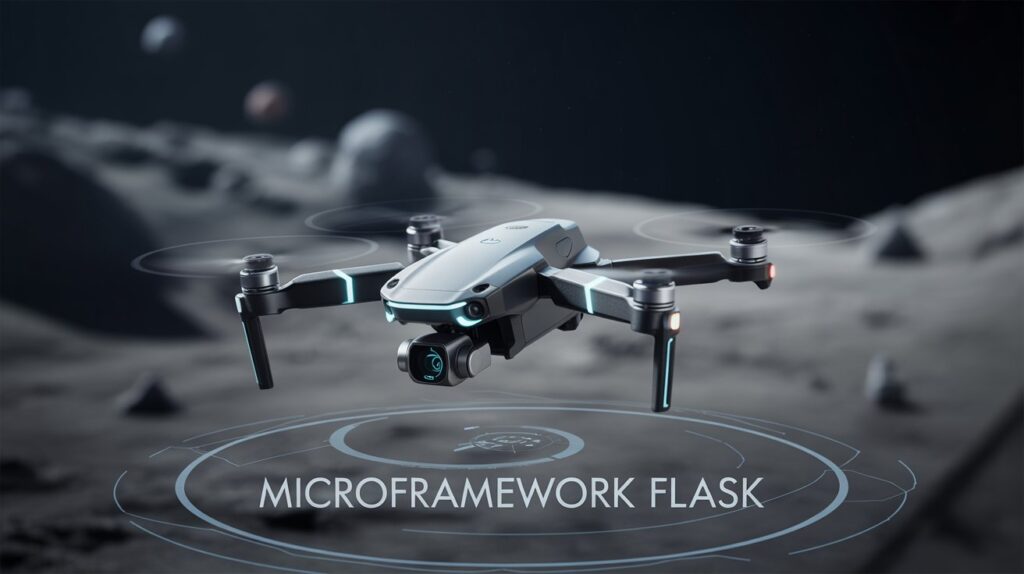
Flask
Build Your Mission Control HQ for the Web !
Once you’ve mastered the basics of Python (if not – read this Python guide first) you are ready for your next frontier. Let’s move from writing scripts to building things that live and breathe on the internet: web applications, build REST APIs and master dynamic data management. To do that, you need a web framework. But which one should you choose for your first mission?
1. What is Flask? Your Mission Control Headquarters
When I looked for a tool to build and teach web applications, I was drawn to Flask’s philosophy. Flask is a simple, powerful framework for creating web applications in Python. Its core is built on two key components: Werkzeug, a reliable engine that handles communication between your server and application, and Jinja2, a powerful templating system for generating dynamic web pages.
I like to think about the choice between frameworks like choosing a vehicle for a space mission:
Django is like a complete, off-the-shelf space shuttle from a major space agency. It’s powerful, secure, and comes with many built-in systems for large, standardized missions (like managing an entire space station).
Flask (Our Choice) is like a modular spacecraft toolkit. You start with a powerful core engine and a control panel. All other components—sensors, navigation, communication modules—are added as your mission requires them. This approach gives you immense flexibility and full control, making it ideal for specialized probes, APIs, prototypes, and the custom applications we want to build.
2. What is Flask Good For? Defining Your Mission Profile
Flask’s minimalist and extensible nature makes it perfect for a wide range of missions. In my experience, it excels at:
Building APIs (Data Relays for Your Probes): Creating robust endpoints for your IoT devices, mobile apps, or other services to send and receive data.
Rapid Prototyping (Shakedown Cruises): Quickly building a Minimum Viable Product (MVP) to test an idea without the overhead of a larger framework.
Dynamic Web Applications (Interactive Dashboards): Building blogs, portfolios, or control panels that display dynamic information from a database.
Microservices (Specialized Mission Modules): Creating small, independent services that work together as part of a larger system architecture.
Knowing Flask allows you to build the “Mission Control” that connects your code to the world.
3. Charting Your Course: From Pre-Flight Checks to Orbit
Learning Flask is a logical journey with several key stages. Before you can launch, you need to master the systems of your craft:
Phase 1: Pre-Flight Checks (The Basics): This is where you learn to set up your environment, initialize the application, and master basic routing—defining the communication channels for your Mission Control.
Phase 2: Building the Cockpit (User Interaction): Here you’ll learn to create dynamic user interfaces using Jinja2 templates and handle user input with web forms.
Phase 3: Core Systems (Data & Logic): This involves connecting to databases (with SQLAlchemy) to manage your mission data and structuring your growing application with an Application Factory and Blueprints to keep it organized and scalable.
Phase 4: The Launch Sequence (Deployment): The final step is moving your application from the local simulator (
localhost) to a live production environment. This involves preparing your app for robust production servers (like Gunicorn), securing configurations, and deploying to a hosting platform like Render or Heroku.
4. The Flask Philosophy: Freedom and Responsibility
The reason I find Flask so compelling, both to use and to teach, is its core philosophy. You start with a functional minimum and add only what you need, when you need it. This gives you great freedom and full control, but also great responsibility. You are the architect of your application.
This approach forces you to understand the components you’re using and make conscious decisions about your project’s structure. It’s a philosophy that aligns perfectly with the mindset of an explorer or an independent builder: you are not just a passenger in a pre-built system; you are the engineer designing the craft for your specific mission. This deeper understanding is an invaluable skill that transcends any single framework.
Ready to Build Your Own Mission Control HQ?
I hope this overview gives you a clear map for exploring Flask. If you’re ready to start building, you can find my complete, hands-on course materials on my GitHub.
 Explore my Course (for free):
Explore my Course (for free):
Flask Apps & Architecture Course materials (on GitHub):
 Let’s talk:
Let’s talk:
To discuss your learning path:
Let’s start building for the future !

 Explore my Course (for free):
Explore my Course (for free): Let’s talk:
Let’s talk: